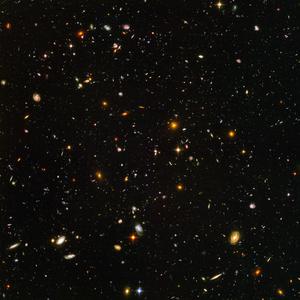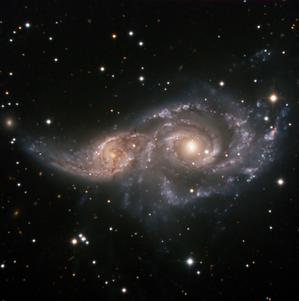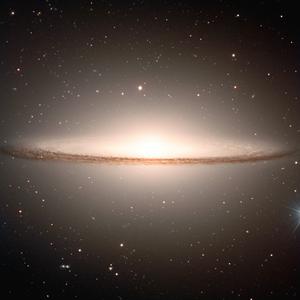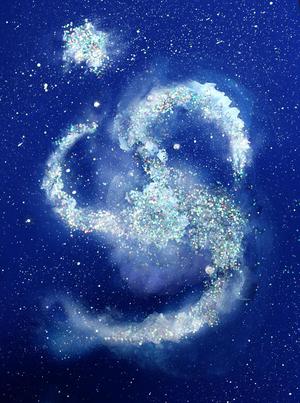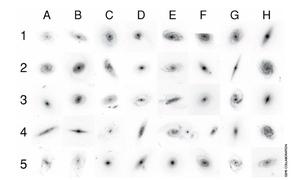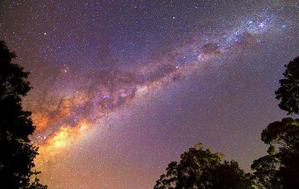Loading...
Related Media
Hubble Ultra Deep Field
Caption: This awe-inspiring image referred to as the Hubble Ultra-Deep Field (HUDF), was obtained using the Hubble Space Telescope (HST), by combining 800 exposures from 400 orbits of the HST, which equates to 11.3 days of total exposure time.
The image shows nearly 10,000 galaxies and was taken in the direction of a patch of sky with the least amount of stars from the Milky Way galaxy in the field of view. The region of sky that the HST observed corresponds to 1/10 the angular size of the Full Moon, which is roughly equal to approximately a 1 millimeter-sized object placed 1 meter away.
Every object in the image, except for the bright points with the crosshairs, are galaxies. As a consequence of the speed of light being a constant in a vacuum, the more distant an object, the further back in time we are observing. Therefore, the light from some of the galaxies in the HUDF image is from when the Universe as only a few hundred million years old. The HUDF image takes us through on a journey through space, and also in time.
Credit: NASA, ESA, and S. Beckwith (STScI) and the HUDF Team credit link
Credit: NASA, ESA, and S. Beckwith (STScI) and the HUDF Team credit link
License: CC-BY-4.0 Creative Commons نَسب المُصنَّف 4.0 دولي (CC BY 4.0) icons
Related Activities
Glitter Your Milky Way
astroEDU educational activity (links to astroEDU website) Description: Explore the Milky Way and characteristics of galaxies using glitter drawing.License: CC-BY-4.0 Creative Commons نَسب المُصنَّف 4.0 دولي (CC BY 4.0) icons
Tags: Art , Creativity , Hands-on , Handcraft Age Ranges: 6-8 , 8-10 Education Level: Middle School , Primary Areas of Learning: Fine Art focussed Costs: Medium Cost Group Size: Group Skills: Communicating informationComa Cluster of Galaxies
astroEDU educational activity (links to astroEDU website) Description: The basics of galaxy classification, using Hubble Space Telescope images.License: CC-BY-4.0 Creative Commons نَسب المُصنَّف 4.0 دولي (CC BY 4.0) icons
Tags: Coma Cluster Age Ranges: 14-16 , 16-19 , 19+ Education Level: Secondary , University Areas of Learning: Guided-discovery learning Costs: Low Cost Duration: 1 hour Group Size: Group Skills: Analysing and interpreting data , Communicating information , Constructing explanations , Planning and carrying out investigationsLiving in the Milky Way
astroEDU educational activity (links to astroEDU website) Description: Build a model of the Milky Way to discover what our galaxy contains.License: CC-BY-4.0 Creative Commons نَسب المُصنَّف 4.0 دولي (CC BY 4.0) icons
Tags: Hands-on , Model Age Ranges: 6-8 , 8-10 Education Level: Primary Areas of Learning: Problem-solving , Social Research Costs: Medium Cost Duration: 1 hour 30 mins Group Size: Group Skills: Asking questions , Communicating information , Developing and using models